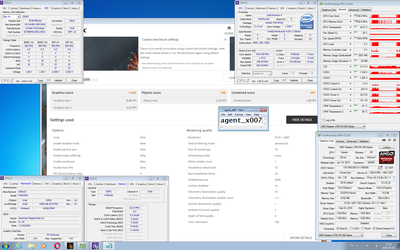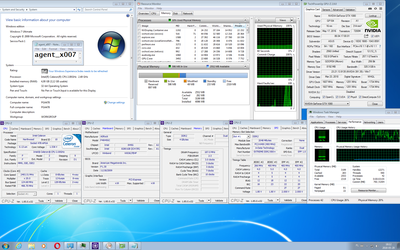First post, by TheAbandonwareGuy
- Rank
- Oldbie
I was thinking about doing an XP dual boot in my main rig. The Twist is I have this crazy idea of adding in a second period correct video card from 2004 and hooking that card into my secondary (4:3) monitors VGA input for a machine that can effectively do both my modern gaming and my retro gaming. This is basically what the machine would look like if I did this:
Case: CoolerMaster CM690-II Advanced (Full ATX Tower, 4 3.5" bays, 4 5.25" bays)
PSU: EVGA 500W 500 Watt 80+ White PSU
Motherboard: ASUS P5N-D SLI (LGA775, nForce 750i, All Solid State Caps, Phoenix BIOS)
Processor: Intel Core2Quad QX9650 @ 3.5GHZ (Unlocked Multiplier @ 11x under 1.46v VCORE)
Cooler:Zalman CNPS-9000 Full Copper Turbine
RAM: 8GB PNY Optima DDR2 PC6400 800MHZ (4x2GB)
Main GPU (PCIe Slot 1): PNY NVIDIA GeForce GTX 780Ti 3GB XLR8 CC Edition
Retro GPU (PCIe Slot 2): Gigabyte NVIDIA GeForce 6600 128MB Silent Pipe II
Sound: Creative Soundblaster X-Fi ExtremeMusic SB0460
Hard Drives: 80GB Seagate SATA (Win7), 500GB WD Black SATA (Modern Games,Win7 only), 1TB WD Blue SATA (2000-2011ish games, Shared), 80GB WD800 IDE (WinXP)
CD Drives: LiteOn SuperMulti Drive SATA, Memorex 52x CD ROM IDE
Main Monitor: LG Flatron IPS225V 21" IPS LED 1920x1080 (DVI to 780Ti)
Secondary Monitor: Dell 1704FP 1280x1024 LCD (DVI to 780Ti/VGA to 6600)
In theory they should be able to share all devices except the GPUs. I would basically have native EAX, Shader Model 3, ShadowBuffers, etc so many benefits to this. I'm thinking if I install the 6600 device drivers under XP and disable the 780Ti under device manager it should default to out putting video from the 6600. Vice versa I would disable the 6600 under Windows 7 to prevent it from interfering in that OS. I could use similar blocking methods to block each OS from seeing hard drives that are not relevant to that particular OS therefore minimizing the chance of issues arising from the dual boot. My motherboard always boots the top (1) PCIe slot as primary video when two video cards are installed so for all other usage cases (such as Win7) nothing should change. The only thing I'm worried about is Windows XP refusing to boot on a machine with nearly 12GB total memory between System and Video RAM as IIRC video memory counts against the 3.25GB RAM limit on Windows XP. I'm just not sure if that applies to a device without drivers, and disabled in the device manager or if it's unconditionally accounted for upon boot. I would also have to disable all hard drives other than the 80GB in BIOs during the XP install otherwise it would destroy the Win7 bootloader on all other drives. I would need to manually add Windows XP to the bootloader for a dual boot setup which is no big deal.
Does this sound feasible to anyone else or just insane and over complicated? Are there any potential issues I'm overlooking?
Cyb3rst0rms Retro Hardware Warzone: https://discord.gg/jK8uvR4c
I used to own over 160 graphics card, I've since recovered from graphics card addiction


